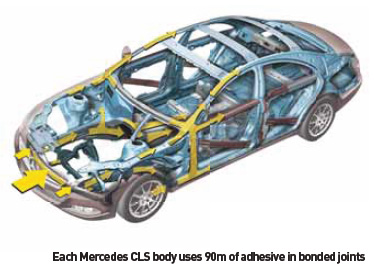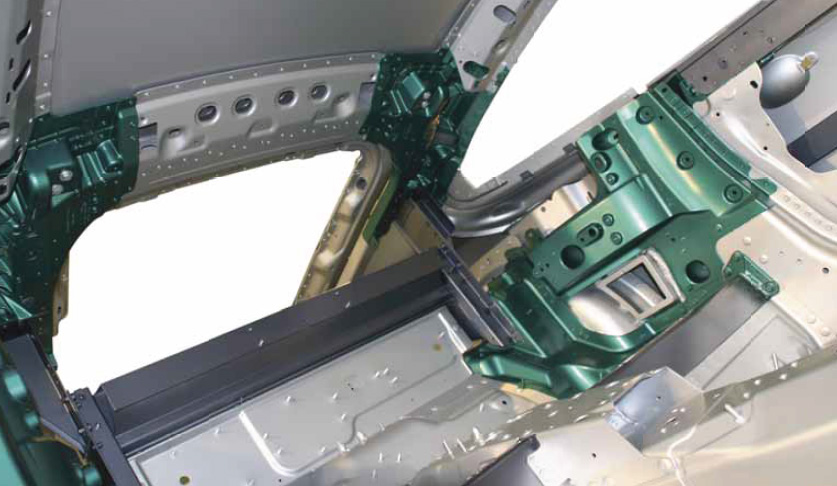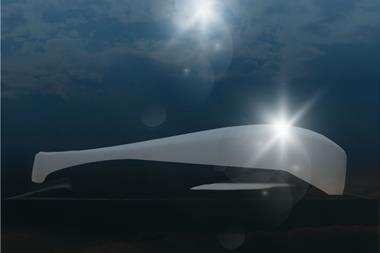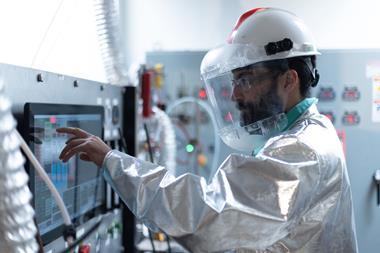The non-welded, all-bonded car has been mooted for years. So why have adhesives not advanced to fulfil primary joining needs?
The use of adhesives in the automotive industry has increased significantly in recent years. Still, the product and procedure is competing with automated, high-volume BIW processes that can be completed at a very low cost, particularly in developing regions where power for welding and mechanical joining methods (clinching, hemming, etc.) is cheap. Add to this the possibilities represented by a low-cost labour force manually completing these weld operations and the case for structural adhesives looks increasingly thin.
Adhesive advantages
The term ‘structural adhesive’ typically defines a product that can withstand high loads under a variety of different stresses for long periods of time. Required to withstand and distribute loads within a joint, they are typically made up of long molecules of a high molecular weight.
The reasons for using adhesive in preference to a mechanical fastening are two fold. Mechanical fastenings can cause stress around the fixing, resulting in stress cracking and possible failure of the substrate. Using adhesives, the extended bond line between the two materials produces lower stresses due to the load being applied over a larger surface area. Further, the adhesive provides a layer between the materials that can absorb impact energy, allowing for thermal expansion and acting as a fatigue-resistant layer.
Developments at Jaguar Land Rover
Mark White, Chief Technical Specialist, Body Engineering at Jaguar Land Rover (JLR) is a confirmed advocate of using adhesives in structural BIW. “We are very enthusiastic about adhesives at JLR, in terms of being incorporated into a joining process, but we currently we use them for secondary joint applications; (adhesives) enhance the primary joint method.”
 At JLR, adhesives are used on both spot-welded and riveted joins. The company, though, is carrying out extensive research into how it can guarantee the robustness of an adhesive joint and how it can model adhesive failure in real-world applications. White explains: “Firstly, we have to understand the failure mode of adhesive before one can start to think of relying on it as a primary joining technology. Secondly, we are investigating the right level of passivation or other corrosion protection on the materials to be bonded, to ensure we have a robust joint. Thirdly, how do we know that we have deposited the right amount of adhesive into the joint? Fourthly, how do we know that, once we have put the panels together, the adhesive is still in the right place and will remain there as it goes through the paint process (ovens, etc.)? And finally, how do we ensure that it has been through the correct time/temperature cycle to guarantee the integrity of the joint, particularly in the case of a 1K (single element) epoxy. These are the five fundamentals that JLR believes need to be 100% assured to make the leap from the current secondary joining technology usage to a primary (and often much higher strength demand) applications.”
At JLR, adhesives are used on both spot-welded and riveted joins. The company, though, is carrying out extensive research into how it can guarantee the robustness of an adhesive joint and how it can model adhesive failure in real-world applications. White explains: “Firstly, we have to understand the failure mode of adhesive before one can start to think of relying on it as a primary joining technology. Secondly, we are investigating the right level of passivation or other corrosion protection on the materials to be bonded, to ensure we have a robust joint. Thirdly, how do we know that we have deposited the right amount of adhesive into the joint? Fourthly, how do we know that, once we have put the panels together, the adhesive is still in the right place and will remain there as it goes through the paint process (ovens, etc.)? And finally, how do we ensure that it has been through the correct time/temperature cycle to guarantee the integrity of the joint, particularly in the case of a 1K (single element) epoxy. These are the five fundamentals that JLR believes need to be 100% assured to make the leap from the current secondary joining technology usage to a primary (and often much higher strength demand) applications.”
Beyond sealing and reinforcing
Many in the industry have been highly sceptical of adhesives in series production, viewing such products as glorified sealants, only applied to prevent water ingress affecting primary joining media and perhaps adding only damping and reinforcing strength to welded or riveted joints. Mark White’s view backs some of this thinking, but he sees adhesives as possibly playing an integral part of every suitable joint: “At JLR, we meet all legal requirements with the primary joining technology and then the adhesive will enhance the performance of the vehicle; from a durability point of view, a structure with adhesive in the welded or mechanical joint will last a lot longer than a structure that has just a welded or riveted joint.”
Together forever?
While chemical companies offer lifecycle information for their products, they cannot allow for all automotive applications, methods and possible corruptions of bonded assemblies. Mark White: “I think we (at JLR) know a lot more than many people about the lifecycle of adhesive joints. Provided they are properly engineered and the adhesive is properly applied, an adhesive-reinforced joint will last longer than one without.
“We have cars that have been under corrosion testing for over 10 years that are as good as new. We clean them off and inspect them once a quarter and we have not seen any adhesive failures yet.”
ITW Plexus adhesives are promoting a range of methacrylate adhesives that have been developed to improve curing, bonding, adhesion and toughening mechanisms. The free radical cure mechanism of Plexus methacrylates is catalytic in nature. When the adhesive and activators are mixed, amines in the adhesive cause the peroxide to decompose into free radicals, which initiate the process of chain polymerisation of the MMA to PMMA. These reactions are exothermic and take place at room temperature, removing the need to apply heat to initiate the cure.
Plexus adhesives are being successfully used in the automotive and truck industry for bonding, for example, bumpers, instrument panels, spoilers, cosmetic surface repairs, airbag housings, glove boxes, door panels, plastic headlights, tail light assemblies, strengthening and structural body parts, grille components, inner door extensions, roof assemblies, side and roof panels and sleeper cabins.
It is not only thermoplastic applications that can benefi t from the use of methacrylate adhesives. Plexus adhesives have provided an alternative to traditional methods of bonding composites, while also allowing the bonding of dissimilar materials, e.g. SMC to E-coated steel, and fi breglass to aluminium.
Sticky choices
Structural adhesive solutions have been considerably more popular in the aerospace sector, the principle difference being that airframe assemblies are rarely welded due to the risk of heat-induced stress fractures, etc. This has meant that there are not very many companies offering products specifically developed for automotive applications. So how does a carmaker select its adhesive supplier partners? Mark White’s answer to who supplies products used at JLR and why bears out the limited availability of suppliers; he names almost all the main players: “We have been lucky, we have found the two or three of the best. We use Dow, Sika and 3M in order of quantity of supply. We have also used Henkel in the past.”
Crashability credibility
Adhesives that can add strength and predictable deformability to vehicle structures have been quietly incorporated into many cars in series production. Indeed, Professor Dr. Heinrich Flegel, Director, Research Materials, Lightweight Design and Manufacturing at Daimler’s Vehicle Body and Drive Systems research unit has stated as much: “Modern lightweight design, safety and modular [BIW] concepts can no longer do without adhesively bonded joints and the strength they provide in a crash scenario.” Dr. Flegel points to the Mercedes CLS Coupe, a ‘multi-material’ design that uses steel in such areas as the roof pillars, longitudinal members and cross members, all of which are subjected to high loads during an impact, while aluminium is employed for large parts such as the bonnet (hood), roof, boot (trunk) lid and rear wings.
The body-in-white is bonded using adhesive and reinforced using self-piercing rivets. Flegel says that, depending on vehicle design, the structural rigidity of the BIW can be increased by between 15 and 30% over a comparable body made with only welded components. The CLS Coupe uses approximately 90 metres of bonded joints in production of a single body.
In addition, the new CLS is the first vehicle from Mercedes-Benz to have frameless, all-aluminium doors. These are made from deep-drawn aluminium panels with extruded sections, and in comparison with conventional steel doors, are approximately 24kg lighter. The new design has called for new joining techniques, where welding has been replaced by a combination of gluing and riveting in a majority of operations.



































